How to Cast Your Android Screen to Your PC
The Android ecosystem is continually growing. There are hundreds of apps and tons of content that appears on the internet daily. Because of that, we often want to watch our favorite Android content on a bigger screen. That’s why there are various devices for streaming Android content on a TV. But, is there a way to cast your Android screen to a PC, without additional equipment? Yes, there is. There are a couple of ways how to mirror your Android screen to a PC. However, some are more reliable than others, and many require a rooted device. So, if you have a non-rooted device, this article is just for you. Without further redo, here I will present you the fastest and most stable way how to cast your Android screen to your PC.
AllCast Receiver
AllCast Receiver is the Chrome app that you will need to make the streaming possible. So, for that purpose, you must have the Google Chrome browser installed first. Here is the download link, if you haven’t downloaded already Google Chrome.
Now you can enter the Chrome Web Store and search for the AllCast Receiver, or just click on the following link AllCast Receiver and install the app. During the installation, you can search through the app info in the “Firewall notes” section and copy the number after the “UDP/TCP ports.” In my case, it is 535515. You will need this number for configuring your computer firewall later.

Configuring the Firewall
To access the firewall settings from your PC, open the search and type “Windows Firewall with Advanced Security.” Now follow the instructions for creating a new Inbound rule.
- Right-click on the Inbound Rules and from the menu choose New Rule.

- Choose the Port toggle from the dialog box and click Next.
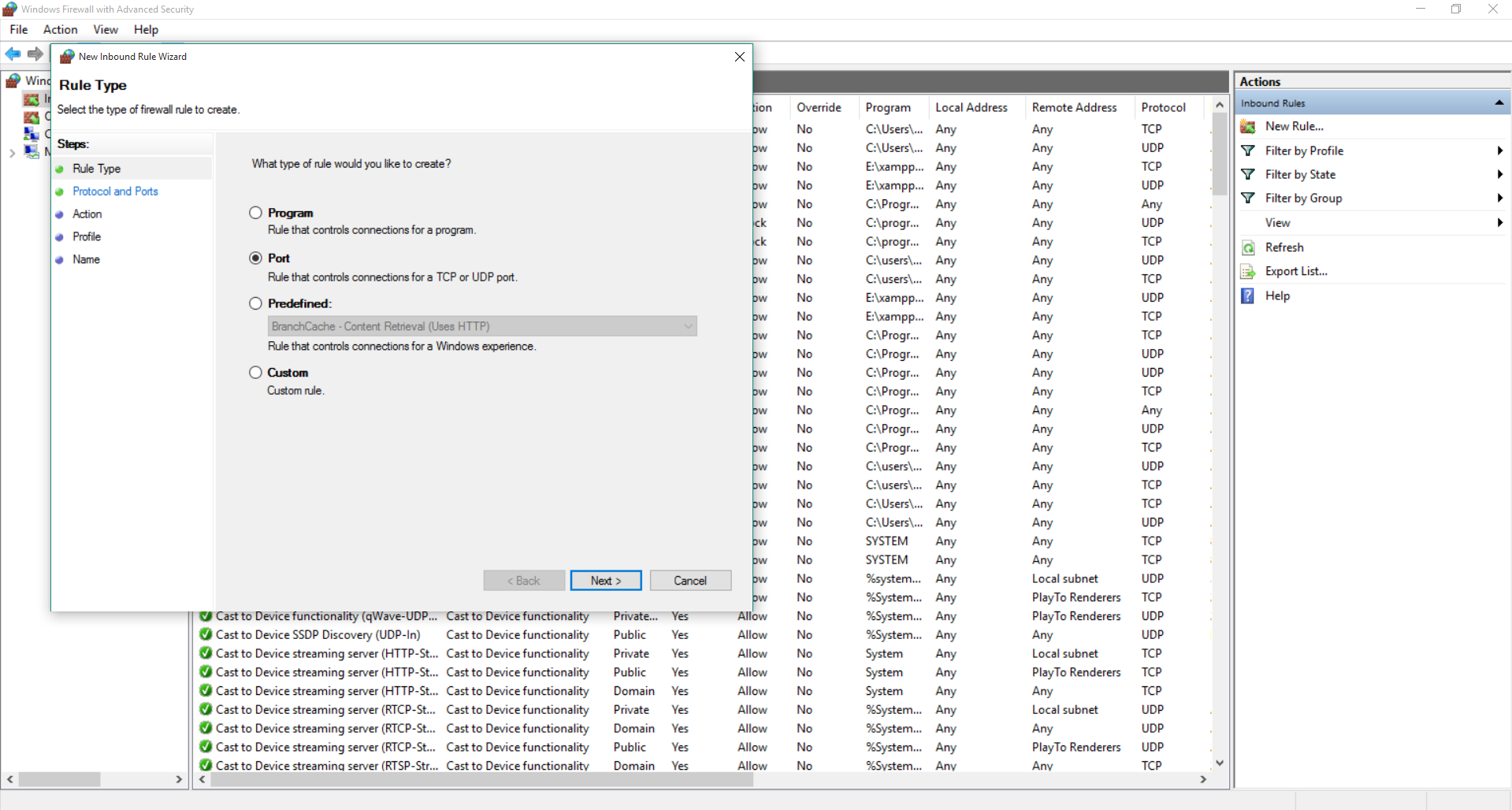
- Select the TCP toggle from the next dialog box and type the number that you have copied earlier (535515).
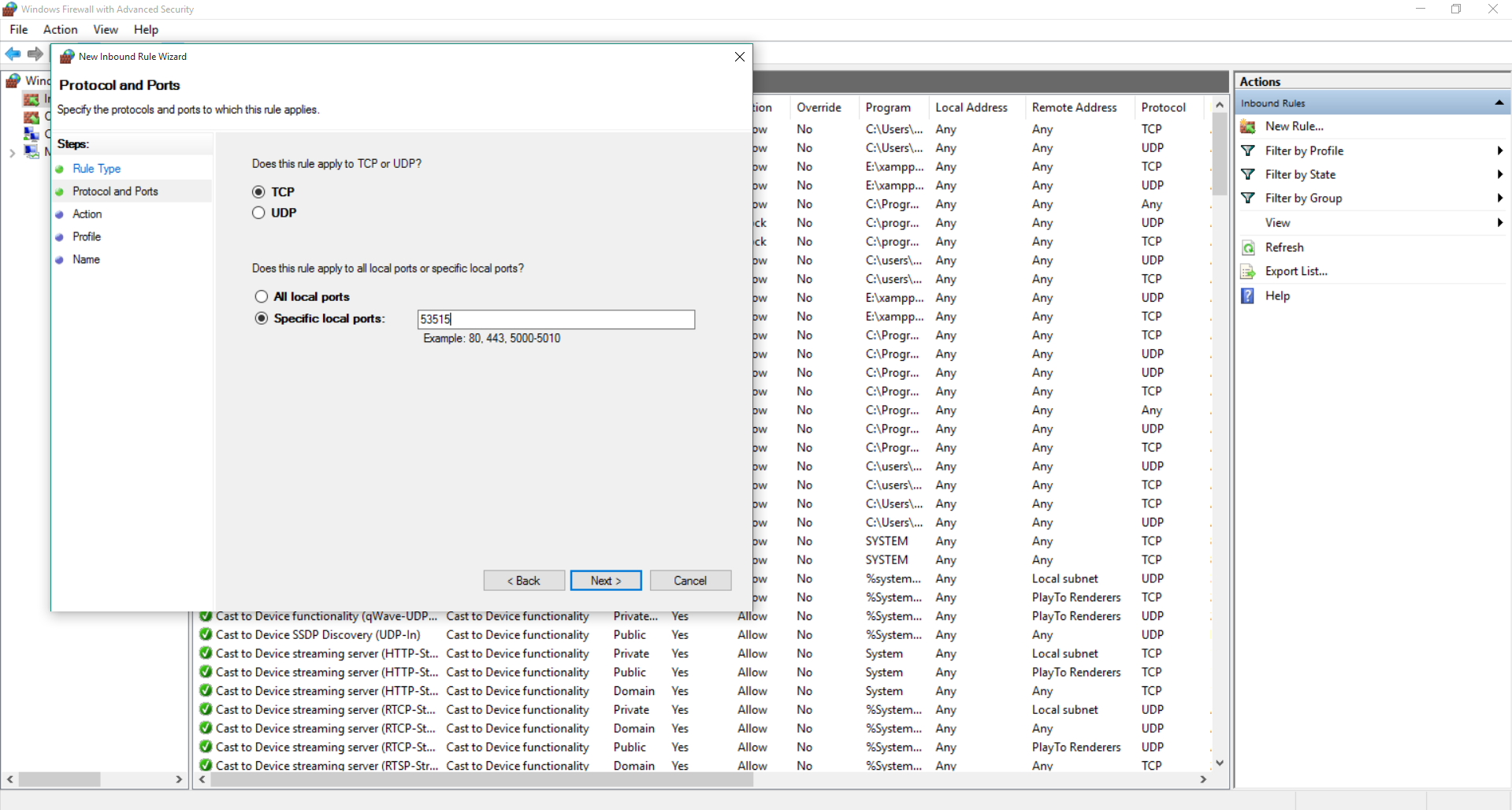
- Select the Allow the connection toggle and click Next.
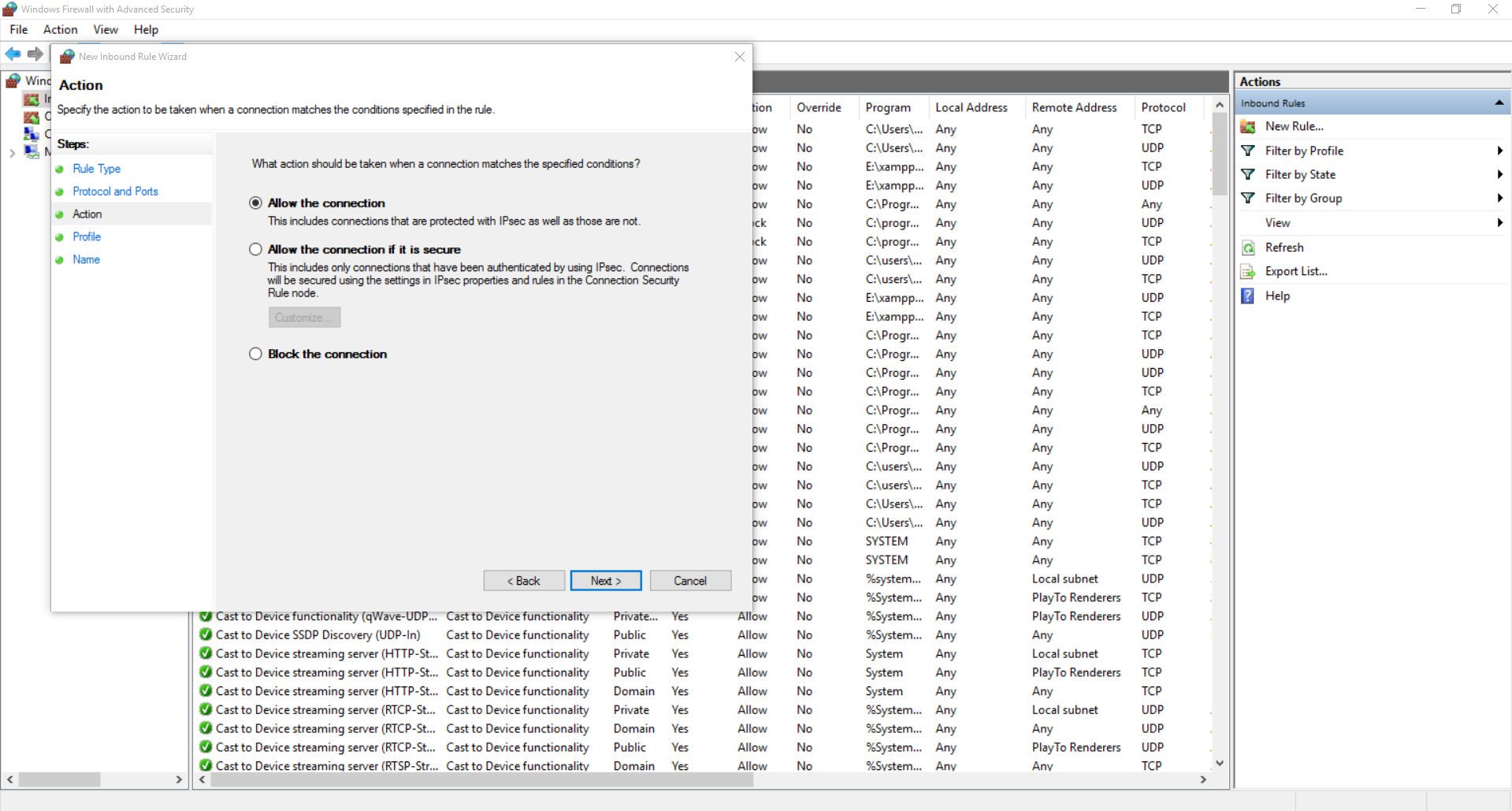
- In this dialog box, you can choose the privacy for your created rule. In my case, I will check all the boxes.

- Type the name of your created rule.
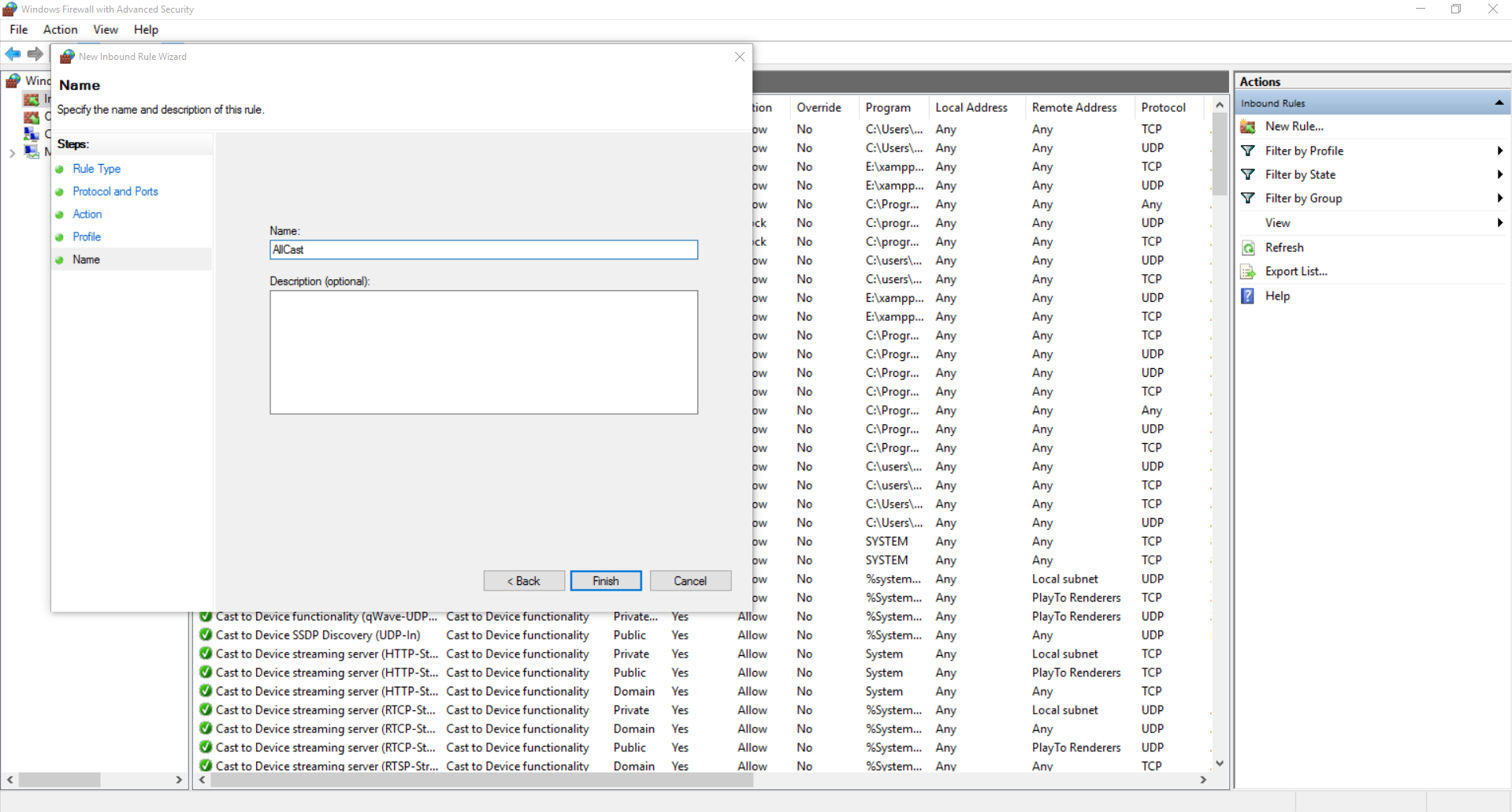
- Now, repeat the steps from 1 to 6 with a slight difference in step Instead of TCP choose the UDP toggle and enter the same number in the field below. Do the rest of the steps as you did it before.
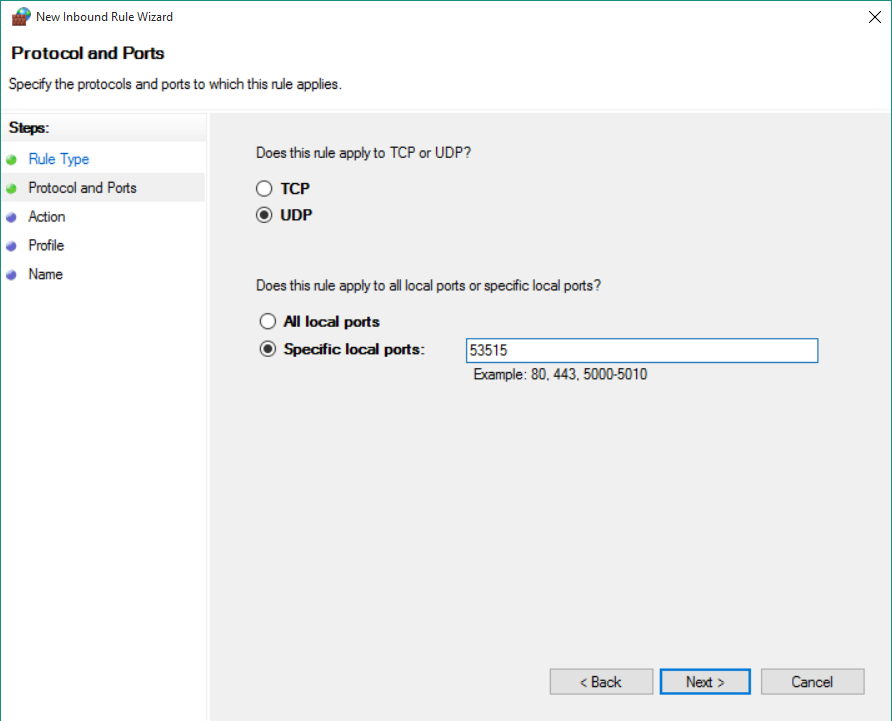
After you finished with creating the second firewall rule, you have your PC ready. Now you can launch the AllCast Receiver app.

Screen Recording and Mirror
The final step of the procedure is configuring your Android device for the casting. For that purpose, you will need to download the Screen Recording and Mirror app from the Google Play Store. In this tutorial, I am using the free version of the app. However, if you like to get rid of the watermarks and advertisements, you can purchase the full version, here is the download link Screen Recording and Mirror.
Now, open the app, and you will notice the IP address of your PC in the section “Cast to a network device.” Click on it, and the casting will begin. You can cast videos, pictures, presentations and every kind of content without a noticeable lag or stuttering.

Wrap Up
Although you think that casting your android screen to your PC might not be very useful now, you will be amazed at how often you would like to use it in the future. The good thing is that with this method you can even control your device through your mouse and keyboard.
The only downside that I found about the AllCast Receiver app is that it can not show your Android content on the full screen. Yes, it has a full-screen mode, but the content from your Android still displays in a smaller window. However, I am pretty sure that this flaw will be fixed in the following updates.
Feel free to try this method and share if you have any other experience with mirroring your Android screen to a PC.